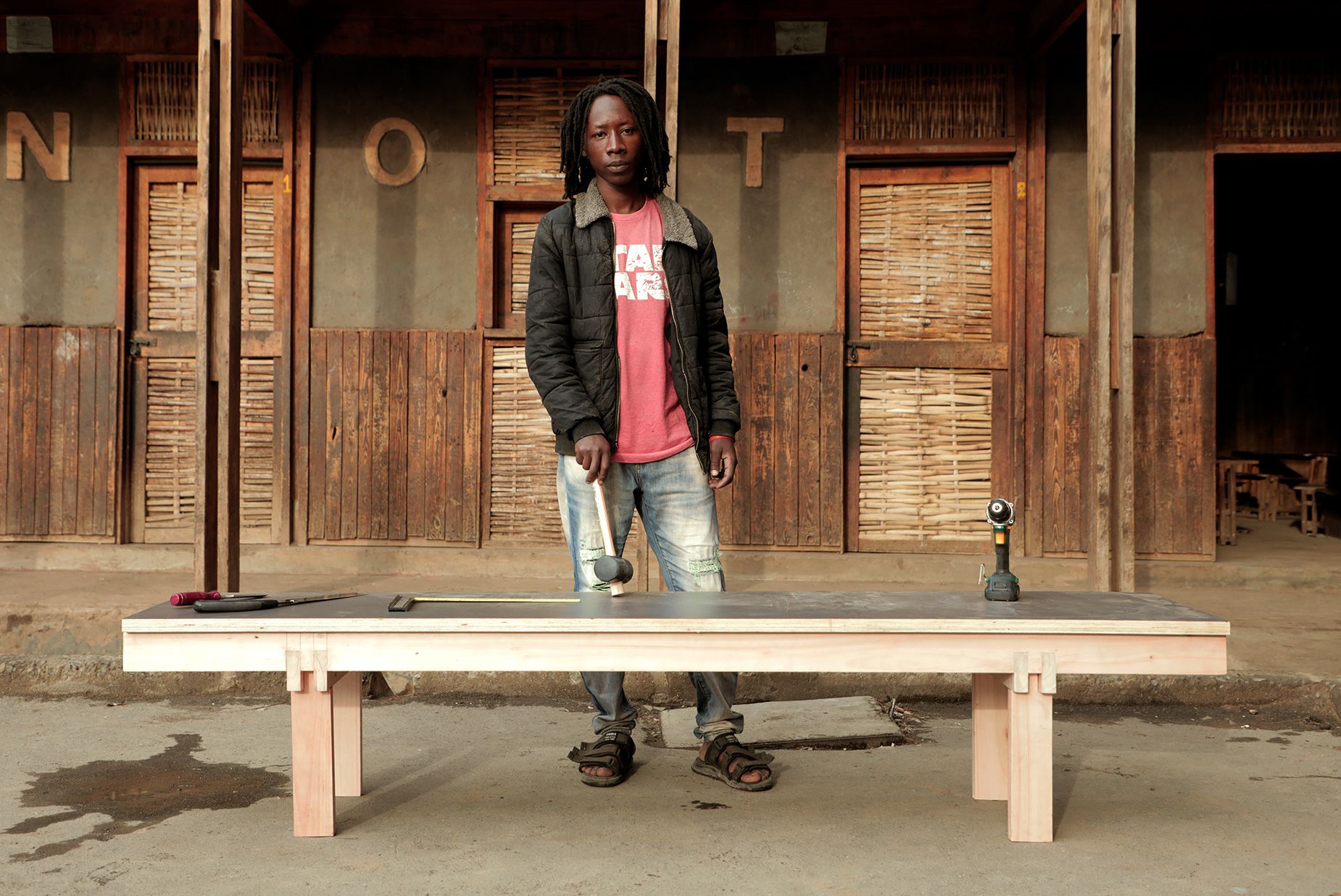The designer bringing Italian furniture to one of Kenya’s oldest slums(2)
A quiet functionality
The designer’s glue-free joints were inspired by the carpentry techniques he has long used in his studio. “Interlocking joints are often used in cabinets because of their strength and attractiveness,” Moor explained. “I reinterpreted them in a way that would require just a handful of tools and simplified the whole technique to the extreme. It’s kind-of like building something out of Lego.”
Although the joints can be secured without the need for metal fasteners, Moor asks those assembling the furniture to knock four supporting nails into each item at the end “for extra safety,” though “they actually aren’t a ‘must’ in terms of structural stability,” he added.
Giacamo Moor’s furniture series includes tables, bunk beds and benches, like the one pictured, that were built on site by members of the school community.
Simon Onyango
“I wanted to avoid having visible nails or screws, because even those can be difficult to come by in a context like Mathare’s. Each element had to be strictly necessary. Nothing superfluous.”
In the planning phase, the designer researched what kind of wood would be readily available in Mathare — namely eucalyptus — and conceived the pieces accordingly to ensure long-term sustainability and scalability. The individual wooden parts can be replaced if damaged or weathered, and may even be used in different types of furniture, as needed.
And despite the basic designs, appearance mattered, too. “It was important to me to provide something that, while aesthetically simple, would still look good,” Moor said. “I think the joints’ padlock system achieves that. Dependable design doesn’t have to be ugly.”
Solid and streamlined, the furniture range has since found new users beyond the Why Not Academy, with Moor selling both assembled and disassembled versions to private customers in Europe. (Ten percent of the profits from these sales goes to the Nairobi school via LiveInSlums, he said.)
Moor hopes his furniture can be used in other parts of the world with limited resources. For now, however, he’s focused on his next LiveInSlums collaboration, which will see him returning to Mathare in January to redesign the school’s kitchen.
“I’d like the kitchen to become more interconnected with its surroundings, and keep that same simplified approach to design,” he said. “You really don’t need complex materials and elaborate extras to create something good.”


